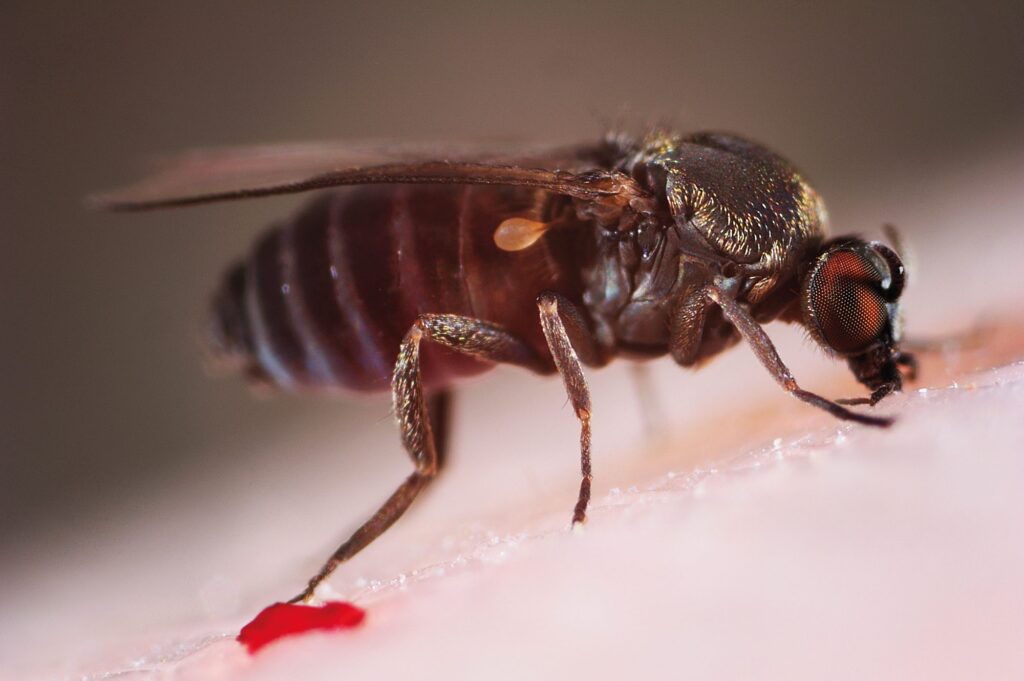Warming temperatures are unleashing parasites in places they have never been before.

Parasites once locked to warm or tropical regions are now showing up in neighborhoods that never had to worry about them. Rising temperatures and shifting seasons are rewriting the rulebook for where parasites thrive. This is bad news for pets, who often encounter these invaders before we even know they have moved in. Scientists are warning that what we thought we understood about pet parasites is changing faster than expected.
1. Tropical heartworms are spreading into cooler regions.

As reported by the American Heartworm Society, mosquitoes carrying heartworm larvae are expanding their range thanks to longer warm seasons. States once considered low-risk are now experiencing year-round transmission, which puts more pets at risk.
This shift is driven by both climate change and urban development, creating more standing water and mild conditions where mosquitoes thrive. For dogs and cats, untreated infections can lead to life-threatening heart and lung issues. Prevention that once felt optional in colder areas is quickly becoming a necessity, showing how quickly this parasite has adapted to new realities.
2. Ticks carrying Babesia are moving farther north.

According to research published in the journal Parasites & Vectors, Babesia microti, a parasite that infects red blood cells, is being reported in regions that historically had few tick-borne illnesses. Warmer winters allow ticks to survive and reproduce in greater numbers, creating new hotspots.
Infected pets can experience fever, anemia, and in severe cases, organ failure. The concerning part is how easily ticks hitch rides on migrating animals or even traveling pets, accelerating their spread. Pet owners in areas once considered safe are now facing a parasite previously only discussed in southern climates.
3. Lungworms are popping up in unexpected habitats.

As stated by the British Veterinary Association, lungworms traditionally found in wet, temperate zones are now appearing in dry regions after unusual rainfall patterns. This shift aligns closely with climate-driven changes in temperature and precipitation cycles.
Lungworms infect pets through snails and slugs, and their presence can cause chronic coughing and breathing issues in dogs and cats. Veterinarians are adapting testing and treatment protocols as areas previously free of these parasites begin reporting cases. It is a clear sign of how climate extremes disrupt even established ecosystems.
4. Sand flies are bringing leishmaniasis to new frontiers.

Sand flies that carry the parasite causing leishmaniasis are spreading beyond historically tropical environments. Rising temperatures and shifts in vegetation are creating perfect habitats in places that never hosted these insects before.
Dogs are particularly vulnerable, developing skin lesions and sometimes fatal organ damage when infected. Treatment is complicated and expensive, leaving prevention as the best strategy. For areas seeing their first cases, pet owners are facing an entirely new type of health threat they never prepared for.
5. Flea-borne tapeworm cases are climbing in dry climates.

Dry, warm climates once limited flea populations, but changing rainfall and urban irrigation have made these areas far more hospitable. With more fleas come higher risks of tapeworm infections, which spread when pets ingest infected fleas during grooming.
These infections often go unnoticed until pets experience digestive issues or visible worm segments. Regular flea control, which some owners neglect in drier regions, is now being recommended as essential year-round. It highlights how even small climate shifts ripple into pet health.
6. Cryptosporidium is thriving after extreme storms.

Increased flooding events create contaminated runoff that exposes pets to Cryptosporidium parasites in soil and water. These microscopic organisms trigger gastrointestinal illness that can last for weeks without treatment.
What makes Cryptosporidium particularly challenging is its resilience—it survives in harsh conditions and is resistant to many common disinfectants. As storms grow stronger and more frequent, exposure risk grows right along with them, forcing pet owners to rethink safe outdoor play areas.
7. Hookworms are evolving to resist treatment.

Hookworms, long considered manageable with standard deworming, are showing resistance in regions experiencing warmer, wetter conditions. These environments speed up their lifecycle, leading to more frequent and severe infections.
Dogs can suffer from weight loss, anemia, and internal bleeding, while resistant strains make treatment more complex and expensive. This emerging issue is pushing veterinarians to explore new medications and prevention strategies just to keep up.
8. Giardia infections spike after drought-to-flood cycles.

Drought followed by heavy rain flushes dormant cysts of Giardia into water sources pets often drink from. These infections cause persistent diarrhea and weight loss, which can be dangerous for puppies and older animals.
Changing weather patterns have made these boom-and-bust cycles more common, leaving pet owners facing health risks that feel unpredictable and fast-moving. It turns simple water safety into a year-round concern, especially for pets that drink from puddles or outdoor bowls.
9. New strains of mites trigger severe skin reactions.

Warmer temperatures and milder winters have created conditions for mite species to expand beyond their usual regions. Some of these emerging strains cause intense itching and skin infections that spread quickly among pets.
Infestations are often more aggressive and harder to treat than traditional mite problems. Owners who never dealt with these pests before are now facing outbreaks that spread through entire households. The combination of climate change and parasite evolution is rewriting what “routine pet care” looks like.

b9i2j8